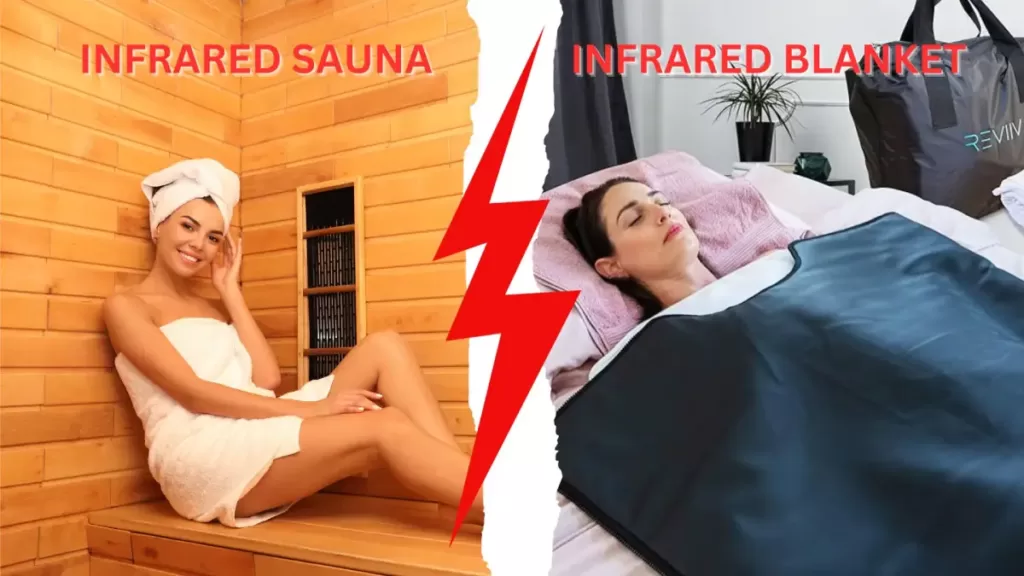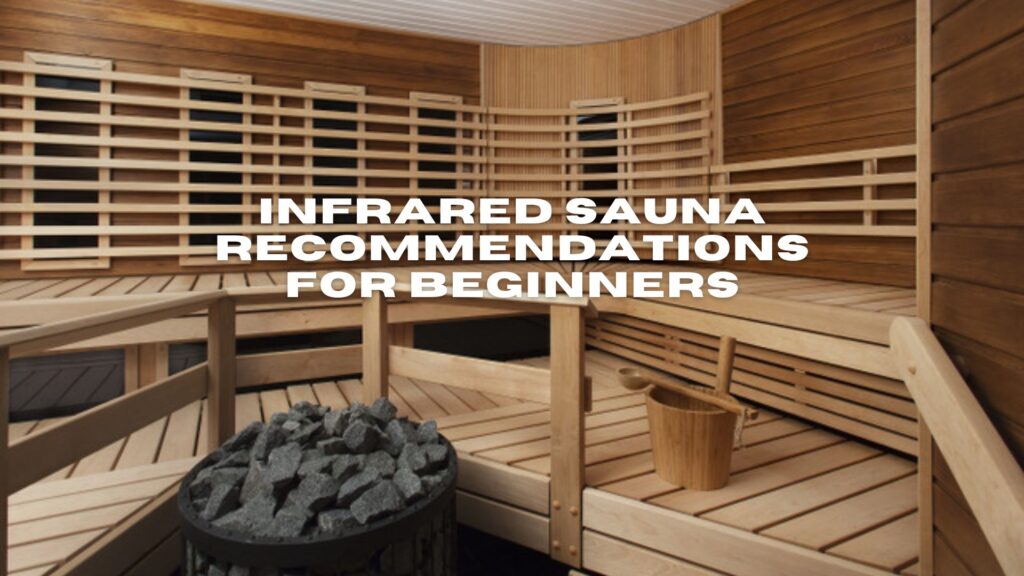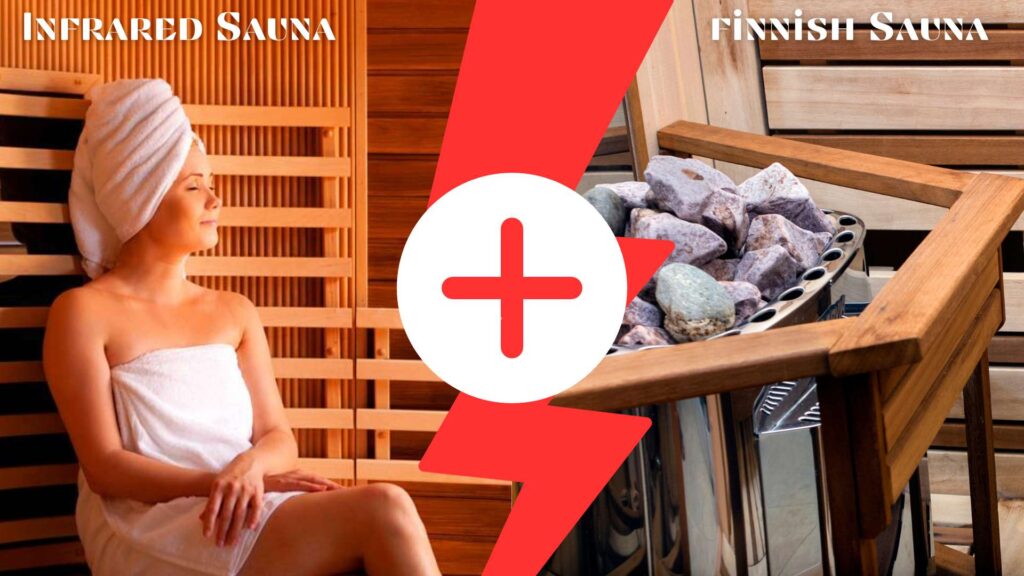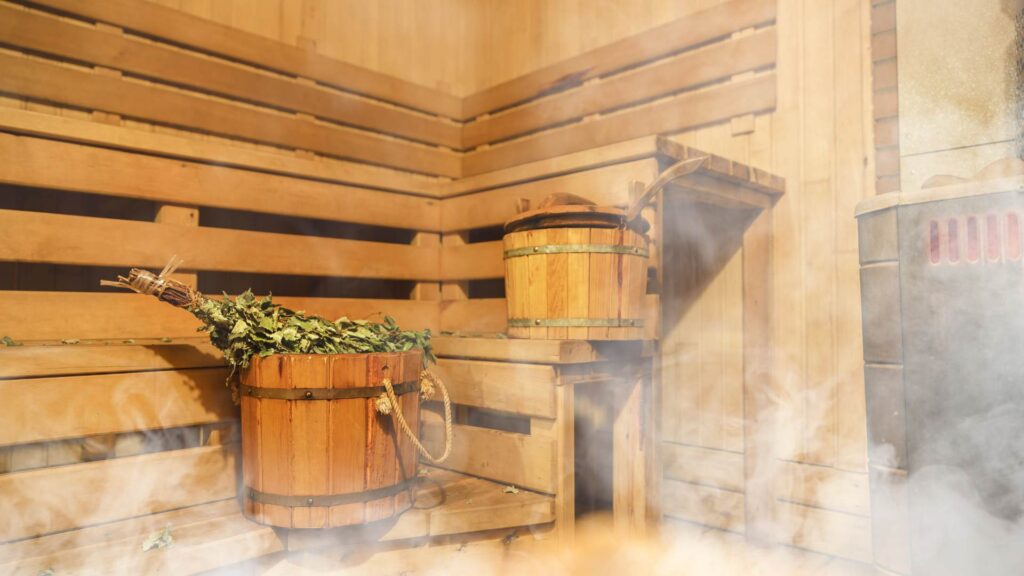
A Guide to Safe Sauna Use for Asthmatics
Before entering a sauna, it’s crucial to ponder some significant factors for a secure and delightful experience. First and foremost, it is highly advised to consult with your physician or healthcare professional before indulging in the sauna realm, particularly if you have asthma or any other underlying health condition. Your doctor will be equipped to offer personalized counsel and guidance based on your specific medical history and overall well-being.
Selecting the appropriate sauna is another pivotal consideration. Various types of saunas are at your disposal, including traditional steam saunas, infrared saunas, and dry saunas. Each variant boasts its distinctive advantages and potential drawbacks; hence thorough exploration is indispensable to opt for the one that aligns best with your needs and preferences. Aspects such as sauna size, construction materials employed, and heating system should all factor into your decision-making process. Furthermore, ensure that the chosen sauna hails from a reputable manufacturer to guarantee quality standards and safety measures are met.
Speak to Your Doctor
It is of utmost importance to consult with a healthcare professional before engaging in sauna usage. Your doctor possesses the expertise necessary to evaluate your unique circumstances and determine the appropriateness of sauna utilization for you. They are capable of detecting any latent health conditions that may serve as contraindications, such as ailments affecting the cardiovascular system or respiratory diseases like asthma. Moreover, your doctor can offer valuable guidance regarding the ideal frequency and duration of sauna sessions tailored specifically to meet your requirements.
During this discussion with your doctor, you must disclose any medications you currently take, as certain drugs might interact unfavorably with the elevated heat and humidity within a sauna environment. Additionally, if you have a history of allergies or skin-related issues, your doctor could potentially provide recommendations aimed at mitigating potential adverse reactions. Always bear in mind that conversing with your doctor before undertaking sauna usage represents an indispensable measure towards safeguarding both your physical well-being and overall safety throughout these sessions.
Emphasizing the importance of consulting with a healthcare professional before sauna use
Before entering a sauna, it’s vital to prioritize your health and well-being. Saunas can affect people differently, especially those with pre-existing medical conditions like asthma. It’s crucial to consult with a healthcare professional beforehand for expert advice. Although saunas are generally safe, it’s better to be cautious and seek medical guidance to ensure there are no underlying health concerns that could worsen due to sauna use. Your doctor will offer valuable insights based on your specific medical history, allowing you to make an informed decision about whether using a sauna is suitable for you.
Moreover, consulting a healthcare professional becomes even more important if you have recently undergone any medical procedures or take medications. Saunas can impact your cardiovascular system and potentially interact with certain drugs or treatments. By discussing your situation with a trusted medical professional, you can receive personalized advice regarding the risks and benefits of using a sauna in consideration of your unique circumstances. This precautionary step will protect your health and guarantee a safe and enjoyable sauna experience without having to worry about complex terminology or difficult concepts
Choosing the Right Sauna
When it comes to selecting the perfect sauna for your requirements, there are a few crucial factors to ponder. One of the initial decisions you need to make is whether you lean towards a traditional sauna or an infrared one. The former employs hot rocks or heaters to warm up the air inside, while the latter uses infrared heaters to directly heat your body. Both types offer their unique advantages, leaving it ultimately up to personal inclination.
Another significant aspect to take into account is the size of the sauna. Saunas come in various dimensions, ranging from cozy cabins that comfortably fit two or three individuals, all the way up to more spacious rooms capable of accommodating larger groups like friends and family. You must select a size that caters specifically to your needs and also suits the available space at your disposal. Moreover, consider carefully which materials have been utilized in constructing the sauna itself. Cedar and hemlock are popular choices due to their innate properties that prevent warping and rotting within high-humidity environments commonly found in saunas. Additionally, factors such as heater type, control mechanism, as well as additional features like lighting and audio systems should be duly taken into consideration during this decision-making process. By thoughtfully evaluating these aspects, you can successfully choose a sauna that aligns with your preferences while simultaneously enhancing your overall experience within its comforting confines.
Tips for selecting a sauna that suits your needs and preferences
When it comes to choosing the perfect sauna for your needs and desires, there are a few important things to think about. First off, consider how many people you want the sauna to accommodate and its size. If you plan on using it alone or with one other person, a smaller unit might be just right. However, if you enjoy sharing the sauna experience with friends or family, you’ll probably want a larger one so everyone can fit comfortably inside.
Another crucial factor is the type of sauna: traditional or infrared? Traditional saunas use heated rocks to create dry heat, while infrared saunas directly warm the body using special heaters. Each type has its advantages and disadvantages, so take some time to research and figure out which aligns best with your preferences and health goals.
In addition to size and type, consider what materials are used in constructing the sauna. High-quality saunas often utilize durable and non-toxic woods like Canadian red cedar or hemlock. These woods can handle high temperatures and moisture while also emitting a pleasant smell during your sessions.
Furthermore, think about the heating system of the sauna. Different saunas have different heat sources – from electric heaters that are convenient and easy to control to wood-burning stoves that offer a more traditional experience.
Lastly but importantly, make sure to check for safety features such as temperature controls, ventilation systems, and warranties when selecting your sauna. Ensuring a secure environment will allow for an enjoyable relaxation session that promotes wellness.
By thoughtfully considering these aspects when making your choice of sauna, not only will you meet your personal preferences but also create an inviting space where you can unwind in comfort while reaping numerous benefits for both mind and body.
Sauna Temperature and Humidity
Temperature and humidity in the sauna are significant factors for people with asthma. The right environment inside the sauna can have a huge impact on their respiratory health. It is recommended to keep the temperature between 70 and 80 degrees Celsius (160-180 degrees Fahrenheit) to ensure a comfortable and effective sauna experience without overwhelming the respiratory system. Additionally, maintaining low humidity levels, ideally between 10%-20%, helps prevent the air from becoming too heavy and humid, which can trigger asthma symptoms.
However, it’s worth noting that these recommendations may vary based on an individual’s tolerance and response to heat and humidity. Some individuals with asthma might find lower temperatures or higher humidity levels more suitable for their condition. Therefore, it is advisable to seek guidance from healthcare professionals or sauna experts to determine specific temperature and humidity settings that will be most beneficial for managing your asthma effectively. Taking personal preferences into account along with individual responses to different heat and humidity levels can optimize the sauna experience for individuals with asthma.
Understanding the ideal temperature and humidity levels for asthmatics
If you suffer from asthma, it’s important to know the right temperature and humidity levels for using a sauna. The ideal temperature inside the sauna should be moderate, usually between 150 and 170 degrees Fahrenheit (65 to 75 degrees Celsius). This ensures that the air is warm enough to have the desired effects without being too hot and causing asthma symptoms. Keep in mind that everyone has their tolerance levels, so pay attention to how your body feels and adjust accordingly.
When it comes to humidity levels, asthmatics are advised to choose saunas with lower humidity. While some people enjoy a more humid sauna experience, higher humidity can make breathing harder for individuals with asthma. By opting for a sauna with lower humidity levels of around 10-20%, asthmatics can better manage their respiratory symptoms and reduce the risk of an asthma attack.
Length of Sauna Sessions
Sauna sessions can be a wonderful way to unwind and relax, but it’s important to be mindful of how long you spend inside. This is especially crucial for individuals with asthma, as certain guidelines should be followed to prevent any triggers or discomfort. While there isn’t a fixed rule for the duration of sauna sessions for people with asthma, experts generally recommend keeping them on the shorter side. They suggest starting with 5-10 minute sessions and gradually increasing the time as you feel more at ease. It’s vital to listen to your body and not push yourself too much, as extended exposure to heat and humidity may potentially worsen your asthma symptoms.
The length of sauna sessions may also vary depending on an individual’s tolerance levels and overall health condition. If you’re new to using saunas or have a history of respiratory issues like asthma, it’s essential to pay extra attention to how your body responds. It’s recommended that you start slowly and gradually increase the time spent in the sauna so you can observe how your asthma symptoms are affected. Ultimately, the goal is to find a balance that works best for you – allowing for an enjoyable sauna experience while minimizing any potential discomfort or respiratory problems. Always remember: to listen closely to what your body tells you and consult with your healthcare provider if you have any concerns or questions about the duration of sauna sessions specific to your asthma condition.
Guidelines on the recommended duration of sauna sessions for asthmatics
For people with asthma, it’s important to be cautious when using saunas to avoid making their symptoms worse. The recommended length of sauna sessions for asthmatics varies depending on the person and how well they can handle it. Generally, it’s best to start with shorter sessions of 5 to 10 minutes and gradually increase the time if you can tolerate it. However, pay attention to how your body feels and watch out for any discomfort or trouble breathing during the session. If you experience any negative effects, it’s a good idea to shorten the session or stop using the sauna altogether. Remember, the goal is relaxation, not stressing out your respiratory system.
It’s also important to consider how often you use the sauna if you have asthma. In general, it’s recommended that people with asthma limit their sauna use to once or twice a week. This gives your body time to recover and reduces the risk of being exposed to too much heat and humidity. Additionally, consult with your healthcare provider about what would be appropriate regarding the duration and frequency of sauna sessions based on your specific condition. They can offer valuable guidance considering your medical history and overall health status. By following these guidelines, you can enjoy using saunas while minimizing any potential triggers for asthma symptoms.
Breathing Techniques Inside the Sauna
Knowing how to breathe properly is essential for asthmatics when in a sauna. The warm and humid environment can sometimes make it difficult to breathe, causing respiratory distress. Therefore, practicing controlled and mindful breathing can help alleviate discomfort and promote relaxation. One technique that can be particularly helpful is diaphragmatic breathing. This involves taking deep breaths through your nose, allowing your abdomen to expand, and exhaling slowly through your mouth. By focusing on breathing from your diaphragm instead of shallow chest breathing, you can improve oxygen intake and feel calmer during sauna sessions.

Another effective technique for asthmatics in a sauna is pursed lip breathing. This involves inhaling through the nose and exhaling through pursed lips as if blowing out a candle gently. Pursed lip breathing helps regulate airflow, prevent rapid breathing, and reduce the risk of hyperventilation. By incorporating these techniques into their routine, individuals with asthma can maximize their lung capacity, manage symptoms effectively, and enhance their overall sauna experience. However, it’s always important to consult with a healthcare professional before trying new breathing techniques to ensure they are suitable for your specific condition.
Introducing specific breathing exercises that can help manage asthma symptoms while using a sauna
Breathing exercises can be helpful for people with asthma who are using a sauna. By incorporating specific techniques, individuals with asthma can better manage their symptoms and have a more comfortable experience in the heat. One such exercise is diaphragmatic breathing, also known as belly breathing. This technique involves taking slow, deep breaths using the diaphragm instead of shallow chest breathing. By focusing on expanding the abdomen with each breath, individuals can improve oxygen flow and promote relaxation, which can help relieve asthma symptoms like wheezing and shortness of breath.
Another effective technique for asthmatics using a sauna is pursed lip breathing. This involves inhaling slowly through the nose and exhaling gently through pursed lips, similar to blowing out a candle. By doing so, individuals can control the airflow and prevent their airways from closing up. Pursed lip breathing also reduces the effort required to breathe, making it easier for people with asthma to manage their symptoms while in the sauna. It’s important to remember that although these breathing exercises may be beneficial, individuals should always listen to their bodies and consult a healthcare professional if they have any concerns or questions.
Hydration and Sauna Use
Staying hydrated is super important when using a sauna, whether you have asthma or not. The high temperatures in the sauna make you sweat like crazy and lose fluids from your body. To avoid getting dehydrated, it’s recommended to drink lots of water before, during, and after your sauna sesh. There’s no specific rule on how much water to gulp down, but it’s crucial to pay attention to what your body tells you and sip when you feel thirsty.
Besides water, it’s also helpful to chug beverages with electrolytes like sports drinks or coconut water. These can replenish the minerals that go bye-bye as you sweat. But keep in mind that sugary drinks or caffeinated beverages should be avoided since they make ya pee more and contribute to dehydration. It’s smart to chat with your healthcare provider about the best ways for you to stay hydrated, especially if there are any health issues or meds involved.
Explaining the significance of staying hydrated during
Staying hydrated while using a sauna is incredibly important for your well-being and to avoid any potential negative effects. The high temperature and humidity in the sauna cause you to sweat excessively, leading to a significant loss of fluids from your body. It’s crucial to replenish these lost fluids by drinking plenty of water before, during, and after your sauna sessions. Drinking water helps keep your body hydrated and prevents dehydration, which can result in symptoms like dizziness, fatigue, and an increased heart rate. So it’s essential to prioritize hydration when using a sauna to ensure a safe and enjoyable experience.
Besides water, it can be helpful to consume drinks that are rich in electrolytes like sports drinks or coconut water to replace the minerals lost through sweating. Electrolytes play an important role in maintaining proper hydration, nerve function, muscle function, and overall balance in the body. However, it’s important to note that sugary or carbonated beverages should be avoided as they can dehydrate you further. Choosing natural and hydrating beverages is the best way to support your fluid needs while using a sauna. By making hydration a priority, you can maximize the benefits of your sauna sessions while keeping yourself properly nourished and hydrated.
SOURCE
The American Lung Association describes asthma as a chronic lung disease that inflames and narrows your airways, making breathing difficult. In rare cases, poor asthma management can lead to airway remodeling.
Read also our previous post:
FAQ
Why is it important to stay hydrated during sauna use?
What should I consider before stepping into a sauna?
How do I choose the right sauna?
What are the ideal temperature and humidity levels for asthmatics in a sauna?
How long should my sauna sessions be if I have asthma?
Are there specific breathing techniques I can use inside the sauna to manage asthma symptoms?
How can I ensure I stay hydrated while using a sauna?
Let's talk on Zoom!
Book your appointment on Zoom now to take your productivity to new heights and achieve your goals.
Click HereBlog posts
-
 Sweat Your Way to Success: Infrared Saunas as Your Ally in the Battle Against Cellulite07 Jan 2024
Sweat Your Way to Success: Infrared Saunas as Your Ally in the Battle Against Cellulite07 Jan 2024 -
 A Guide to Safe Sauna Use for Asthmatics02 Jan 2024
A Guide to Safe Sauna Use for Asthmatics02 Jan 2024 -
 Infrared Sauna Trends to Watch in 202429 Dec 2023
Infrared Sauna Trends to Watch in 202429 Dec 2023 -
 Can Infrared Saunas Help with Acne?24 Dec 2023
Can Infrared Saunas Help with Acne?24 Dec 2023 -
 Melt Away the World: Dive into the Warmth and Tradition of a Finnish Christmas Sauna22 Dec 2023
Melt Away the World: Dive into the Warmth and Tradition of a Finnish Christmas Sauna22 Dec 2023 -
 Ten of the Most Extraordinary Saunas in the World20 Dec 2023
Ten of the Most Extraordinary Saunas in the World20 Dec 2023 -
 Sauna Safety During Pregnancy: A Trimester-by-Trimester Guide02 Dec 2023
Sauna Safety During Pregnancy: A Trimester-by-Trimester Guide02 Dec 2023 -
 Sauna Etiquette: Do's and Don'ts30 Nov 2023
Sauna Etiquette: Do's and Don'ts30 Nov 2023 -
 Experience Relief: Infrared Sauna Rosacea Treatment Options28 Nov 2023
Experience Relief: Infrared Sauna Rosacea Treatment Options28 Nov 2023 -
 Unlock Sauna Skin Benefits for Radiant, Healthy Glow25 Nov 2023
Unlock Sauna Skin Benefits for Radiant, Healthy Glow25 Nov 2023 -
 Infrared Blanket vs Infrared Sauna18 Nov 2023
Infrared Blanket vs Infrared Sauna18 Nov 2023 -
 Is A Sauna Good For COVID?14 Nov 2023
Is A Sauna Good For COVID?14 Nov 2023 -
 Does Infrared Sauna Help Psoriasis?12 Nov 2023
Does Infrared Sauna Help Psoriasis?12 Nov 2023 -
 The Healing Powers of Infrared Sauna for Burn Treatment07 Nov 2023
The Healing Powers of Infrared Sauna for Burn Treatment07 Nov 2023 -
 Will an infrared sauna improve the open wounds of a person with diabetes?04 Nov 2023
Will an infrared sauna improve the open wounds of a person with diabetes?04 Nov 2023 -
 Tips for sauna relaxation29 Oct 2023
Tips for sauna relaxation29 Oct 2023 -
 Traditional Saunas Or Infrared Saunas For Children25 Oct 2023
Traditional Saunas Or Infrared Saunas For Children25 Oct 2023 -
 How Infrared Saunas Can Help with Chronic Pain23 Oct 2023
How Infrared Saunas Can Help with Chronic Pain23 Oct 2023 -
 Skin Benefits of Infrared Saunas20 Oct 2023
Skin Benefits of Infrared Saunas20 Oct 2023 -
 Infrared Saunas for Athletes: Can Athletes Benefit From Using Infrared Saunas?12 Oct 2023
Infrared Saunas for Athletes: Can Athletes Benefit From Using Infrared Saunas?12 Oct 2023 -
 What Should I Do Immediately After a Sauna?09 Oct 2023
What Should I Do Immediately After a Sauna?09 Oct 2023 -
 Infrared Saunas During Pregnancy: Safety, Precautions, and Benefits06 Oct 2023
Infrared Saunas During Pregnancy: Safety, Precautions, and Benefits06 Oct 2023 -
 Infrared sauna weight loss - Acts or fictions?02 Oct 2023
Infrared sauna weight loss - Acts or fictions?02 Oct 2023 -
 Infrared Sauna and Anti-Aging29 Sep 2023
Infrared Sauna and Anti-Aging29 Sep 2023 -
 Infrared Sauna Temperature and Time Recommendations for Beginners26 Sep 2023
Infrared Sauna Temperature and Time Recommendations for Beginners26 Sep 2023 -
 Duetto Sauna Infrared Heaters is The Safe Choice for Combining Infrared and Finnish Saunas23 Sep 2023
Duetto Sauna Infrared Heaters is The Safe Choice for Combining Infrared and Finnish Saunas23 Sep 2023 -
 Infrared Sauna Therapy - A Promising Ally Against Cardiovascular Diseases in the UAE21 Sep 2023
Infrared Sauna Therapy - A Promising Ally Against Cardiovascular Diseases in the UAE21 Sep 2023 -
 The Fusion of Sauna and Yoga with Infrared Heat18 Sep 2023
The Fusion of Sauna and Yoga with Infrared Heat18 Sep 2023 -
 11 reasons why you should invest in an Infrared Sauna Heater16 Sep 2023
11 reasons why you should invest in an Infrared Sauna Heater16 Sep 2023 -
 Why Infrared Sauna Heaters are Simply Incredible14 Sep 2023
Why Infrared Sauna Heaters are Simply Incredible14 Sep 2023 -
 The Ultimate Guide to Finnish Saunas04 Sep 2023
The Ultimate Guide to Finnish Saunas04 Sep 2023 -
 FINNISH SAUNA VS. INFRARED SAUNA04 Sep 2023
FINNISH SAUNA VS. INFRARED SAUNA04 Sep 2023 -
 Combination of Finnish and Infrared sauna!01 Sep 2023
Combination of Finnish and Infrared sauna!01 Sep 2023

































